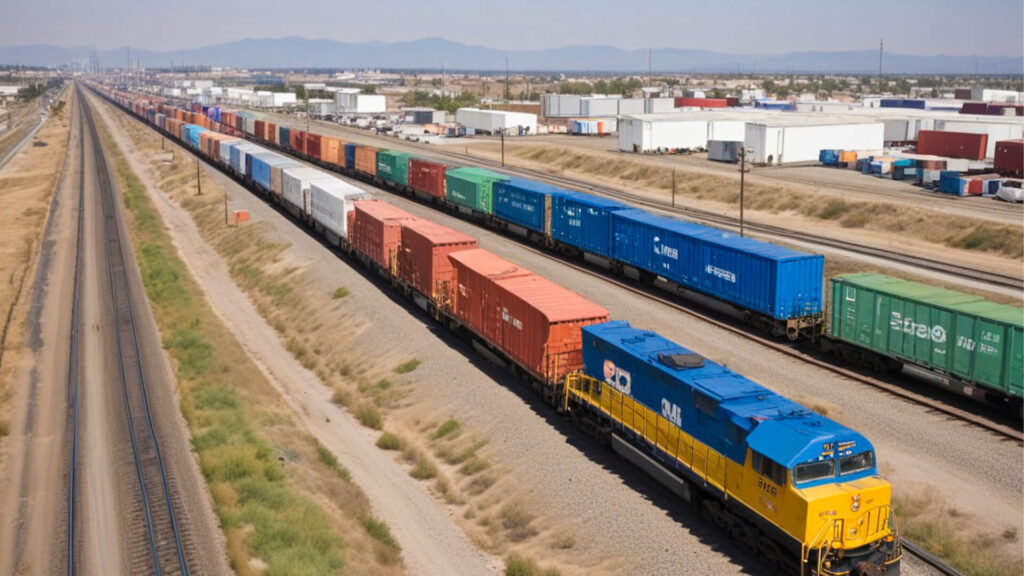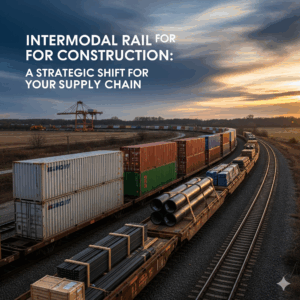This post was last updated on May 22nd, 2025
Key Advantages of Intermodal Transportation for Shippers
Discover the Top Advantages of Intermodal Transportation
In today’s competitive shipping landscape, shippers are searching for methods that offer flexibility, efficiency, and sustainability. This is where the advantages of intermodal transportation shine. As the global economy becomes more interconnected and businesses demand faster, cost-effective logistics solutions, intermodal shipping has emerged as a preferred strategy for many industries.
The core advantages of intermodal transportation lie in its ability to combine multiple transportation modes – typically truck, rail, and sea – without handling the actual cargo when changing modes. By using standardized containers, goods can move seamlessly from ships to trains to trucks with minimal disruption. This translates into reduced cargo handling, lower risk of damage, and significantly improved operational efficiency.
Cost savings represent another major benefit. One of the key advantages of intermodal transportation is its ability to reduce expenses by leveraging the most economical method for each leg of the journey. Rail transport, for instance, is considerably more fuel-efficient and cost-effective than long-haul trucking, especially when moving goods across long distances. By integrating different modes, businesses can avoid high toll fees, cut fuel costs, and optimize their supply chain spending.
Environmental impact is also a critical factor. The advantages of intermodal transportation go beyond economics – they support sustainability goals. Rail transport generates significantly fewer emissions than trucks per ton-mile. When businesses shift more cargo onto rails as part of their intermodal strategy, they drastically reduce their carbon footprint. This contributes to corporate ESG (Environmental, Social, and Governance) goals, helping brands demonstrate responsible logistics practices.
Reliability is another reason companies embrace this shipping model. With rising demand for predictable, on-time deliveries, one of the understated advantages of intermodal transportation is the reduction of traffic-related delays and driver shortages. Trains operate on fixed schedules and routes, often avoiding the congestion that plagues road transport. This adds a layer of consistency and predictability to shipments.
In 2025, with technology advancing rapidly, the advantages of intermodal transportation continue to grow. Real-time tracking, automated logistics systems, and AI-powered route optimization now enhance visibility and responsiveness across the entire supply chain. Businesses can make better decisions, respond faster to disruptions, and keep customers informed – improving both efficiency and service quality. Whether you’re a small manufacturer shipping across provinces or a global brand managing a complex network, the advantages of intermodal transportation are too significant to ignore. From cost control and sustainability to reliability and speed, this modern shipping solution empowers you to compete smarter in today’s fast-moving marketplace.
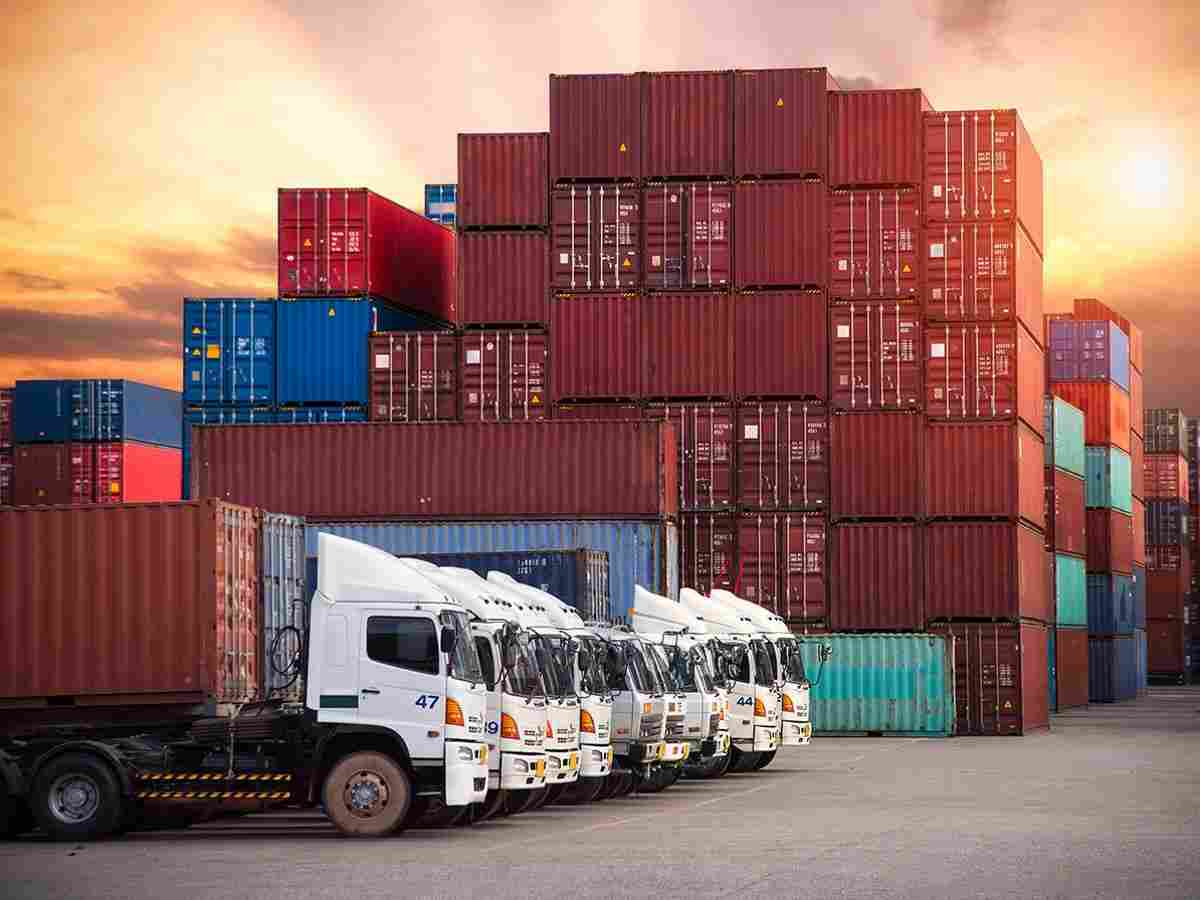
Intermodal Shipping at a Glance
Intermodal shipping is a key component of efficient container shipping in Canada, especially in a geographically vast country with well-established transportation networks. At its core, intermodal shipping refers to the movement of goods in a single container across multiple modes of transportation – typically truck, rail, and ship – without the need to unload and reload the cargo itself. This method reduces handling, enhances security, and improves overall shipping efficiency.
What Makes Intermodal Shipping So Valuable?
Canada’s unique infrastructure, including transcontinental railways, modern highways, and active seaports on both coasts, makes it ideal for intermodal container shipping. The ability to seamlessly switch between transport modes without disrupting the contents of the shipment allows businesses to optimize for speed, cost, and reliability. For example, goods might travel by rail from Vancouver to Toronto and then be delivered by truck to a local distribution center – all without being unpacked from their original container.
This continuity reduces the risk of damage, theft, and delays commonly associated with freight that requires repacking or excessive handling. In addition, each transport mode contributes its strengths: rail is more cost-effective for long distances, trucks offer last-mile flexibility, and ships handle large-volume international trade.
How Intermodal Integrates with Container Shipping
Container shipping and intermodal shipping go hand-in-hand. Containers are designed to fit universally on truck chassis, railcars, and ocean vessels. This compatibility is made possible by global ISO standards, allowing containers to move smoothly between countries and continents with minimal friction.
Businesses benefit from this integration in several ways:
- Lower Costs: Using rail for the bulk of a journey often reduces overall transportation costs compared to trucking alone.
- Greater Efficiency: Fewer stops and less cargo handling mean fewer opportunities for errors or delays.
- Scalability: Intermodal systems handle large volumes, making them ideal for expanding operations.
- Sustainability: Rail transport emits significantly less CO₂ than long-haul trucking, reducing the carbon footprint of each shipment.
Real-World Intermodal Scenarios in Canada
Imagine you’re shipping consumer electronics from a factory in Shenzhen to a retailer in Ottawa. The journey may begin with an ocean container arriving at the Port of Vancouver. From there, the sealed container is placed directly onto a railcar bound for Toronto. Upon arrival, it’s transferred to a truck for final delivery in Ottawa. Throughout the entire trip, the container remains closed and secure, which minimizes tampering and damage.
Another example: an Alberta-based agricultural exporter sends grain to Europe. The grain is loaded into a bulk container in Calgary, trucked to a rail terminal, and then moved to the Port of Montreal. From there, it’s shipped across the Atlantic without ever being unpacked. This level of efficiency would be nearly impossible without intermodal shipping systems in place.
Key Considerations for Intermodal Container Shipping
While intermodal shipping offers many advantages, there are important factors to consider:
- Container Compatibility: Ensure your cargo is suited to standard container dimensions.
- Weight Restrictions: Each transport mode has specific weight limits and guidelines.
- Scheduling and Coordination: Intermodal success depends on synchronized timelines between trucking, rail, and maritime carriers.
- Documentation: Each leg of the journey requires accurate paperwork – especially for international segments.
Technology also plays a growing role in intermodal logistics. GPS tracking, AI-powered routing, and digital documentation help coordinate shipments across modes and borders, giving shippers real-time visibility and control.
For Canadian businesses looking to improve delivery times, reduce costs, and scale operations, intermodal container shipping is an intelligent strategy. It leverages the best of each transportation method while maintaining the integrity and security of your goods. Whether you’re distributing goods across provinces or shipping overseas, intermodal shipping provides the reliability and flexibility modern supply chains demand.
The Advantages of Intermodal Transportation
As we discussed earlier, there are many advantages of intermodal transportation that can streamline your entire shipping process. So, Let’s delve into these advantages and see how they can bring about a positive impact on your supply chain:
Reduced Costs
Intermodal transportation often translates to significant cost savings, especially for longer distances. Here’s why:
- Lower Fuel Costs: Since trains are more fuel-efficient for land transportation, intermodal shipping uses less fuel overall.
- Reduced Handling Fees: Goods stay within the container throughout the journey, minimizing handling and lowering associated charges.
- Increased Cost-Effectiveness: Utilizing trains for long hauls reduces the cost per ton of freight moved, contributing to overall cost efficiency. (We’ll explore the sustainability aspect of this benefit further down.)
Greater Access to Capacity
Intermodal transportation offers substantial capacity, particularly on busy freight routes. With its reliance on rail, it provides a reliable solution during times of limited truck availability or driver shortages. Here’s how it works:
- Efficient Dray Operations: The short distances between origin/destination ramps and rail lines (typically under 100 miles) allow a single driver to manage multiple loads in a day.
- Double-Stacking on Rail Cars: Rail cars can stack containers on top of each other, effectively doubling their carrying capacity.
- Optimized Driver Utilization: Unlike truckload transportation where drivers work long distances between loads, intermodal allows for more efficient use of drivers.
Enhanced Safety
Intermodal transportation offers increased safety for your cargo by minimizing theft, accidents, and damage:
- Reduced Theft Risk: Rail transport for the majority of the land journey reduces the risk of theft compared to traditional truckload shipping.
- Constant Monitoring: Railroad police continuously track intermodal freight, along with high security levels at terminals and rail yards.
- Fewer Accidents: Rail travel experiences fewer accidents compared to road transportation, minimizing the risk of damage due to collisions.
- Reduced Handling: Keeping goods within containers during transport minimizes the chance of damage caused by handling.
- Safe Transport of Hazardous Materials: Trains are trusted for transporting hazardous materials. According to the American Association of Railroads, over 99.99% of hazardous materials reach their destination safely by rail.
Sustainability
Intermodal transportation stands out for its eco-friendly approach:
- Fuel Efficiency: As mentioned earlier, trains offer superior fuel efficiency for land transportation.
- High Freight Efficiency: A single train can carry the equivalent of hundreds of truckloads, maximizing freight movement with less impact.
- Reduced Carbon Footprint: By choosing intermodal transport, shippers can significantly reduce their carbon footprint due to the inherent efficiency of trains.
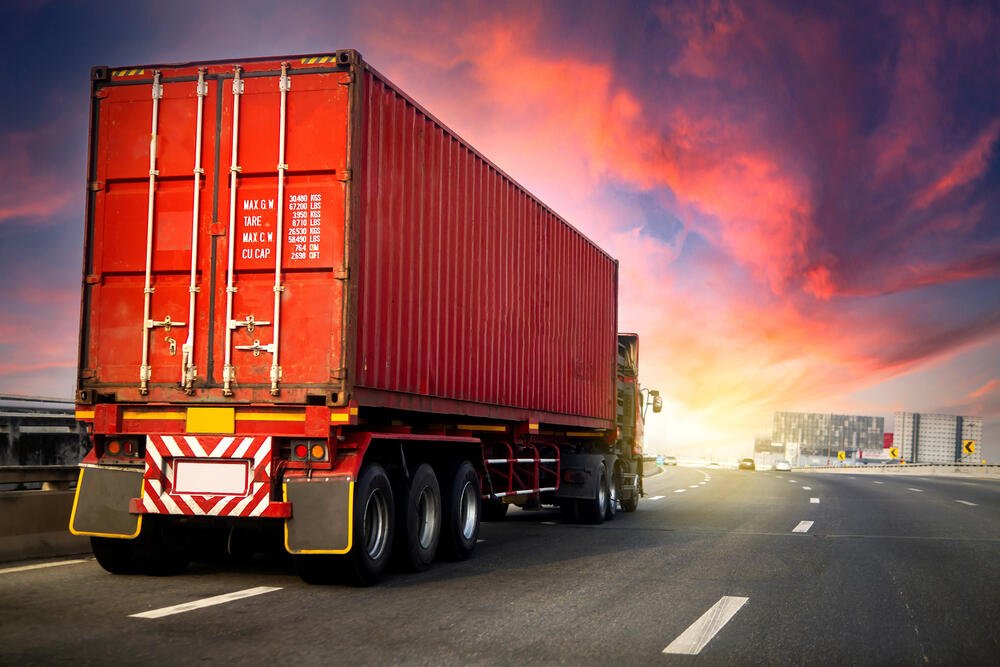
The Reasons Behind Intermodal’s Continued Rise
The trucking industry can be up and down. Good times can mean higher trucking prices, less space for cargo, and truck companies being choosier about the routes they take. On the other hand, bad times can lead to trucking companies going out of business, which means there’s less space for cargo overall.
The trucking industry can be up and down. Good times can mean higher trucking prices, less space for cargo, and truck companies being choosier about the routes they take. On the other hand, bad times can lead to trucking companies going out of business, which means there’s less space for cargo overall.
Here’s how intermodal transportation can help navigate these uncertainties:
- Protection from Price Ups and Downs: Intermodal pricing might not always be cheaper than truckload, but it’s more steady. This is important when truckload prices change a lot.
- Guaranteed Capacity: Intermodal transportation provides a vast amount of capacity, particularly on high-volume routes. This is crucial when truckload capacity tightens due to economic factors or regulations.
- Reliable Service: Contrary to some beliefs, intermodal service can be equal to or even better than truckload. Choosing the right intermodal provider ensures exceptional service levels for your customers.
Additional Benefits of Intermodal Transportation:
- Smoother Cross-Border Shipping: Intermodal transportation can streamline cross-border shipping between the US, Canada, and Mexico by simplifying customs clearance processes.
When Should You Use Intermodal Transportation
There are many advantages of intermodal transportation, but it’s important to know when it works best. Here’s a quick guide:
- Long Distances: Intermodal saves money on long hauls, typically over 700 miles. Trains are more fuel-efficient for these distances, bringing down your costs.
- Large Shipments: Need to move a lot of stuff? Intermodal has tons of capacity, so it’s perfect for high-volume freight.
Here’s where to be cautious:
- Time Sensitive Deliveries: Intermodal can take longer than truck transport because of switching between trains and trucks. If speed is crucial, intermodal might not be the best choice.
- High-Value Goods: Similar to time-sensitive deliveries, consider if waiting is okay for valuable cargo.
By understanding these situations, you can decide if intermodal transportation is the right fit for your shipping needs.
Conclusion
Why You Should Embrace the Advantages of Intermodal Transportation Today
As logistics and freight shipping evolve, companies that want to stay ahead are embracing the advantages of intermodal transportation. In 2025, with supply chains more interconnected than ever, businesses need flexible, scalable, and eco-friendly shipping solutions. Intermodal transport checks all these boxes – and more.
One of the most compelling advantages of intermodal transportation is its ability to offer cost-effective long-haul shipping. When fuel prices fluctuate or trucking lanes become congested, having the option to shift freight to rail or ship can dramatically improve bottom-line performance. This adaptability ensures resilience in your supply chain – something every company needs in today’s unpredictable global market.
Operationally, the advantages of intermodal transportation are game-changing. Containers are moved less frequently and handled more efficiently, which decreases the likelihood of damage and loss. Fewer touchpoints mean fewer errors and a smoother end-to-end experience. For high-value or sensitive goods, this added protection is a significant benefit.
Let’s not overlook sustainability. More than ever, stakeholders are paying attention to how goods are moved. Among the advantages of intermodal transportation, reducing emissions is a top priority. Businesses are under increasing pressure to meet ESG goals and reduce their environmental impact. By shifting more freight onto rails – especially for long hauls – you cut down on carbon emissions significantly while demonstrating environmental leadership.
There’s also a customer service dimension to consider. Today’s consumers and B2B clients expect transparency, timely deliveries, and dependable tracking. Thanks to new digital technologies, one of the newest advantages of intermodal transportation is end-to-end visibility. This empowers shippers with real-time insights, improving communication with customers and allowing for proactive problem-solving.
Finally, the long-term scalability of intermodal transportation positions your business for future growth. As you expand into new markets, streamline logistics, and implement digital transformation strategies, intermodal shipping gives you the infrastructure and flexibility to adapt. It’s not just about cost-cutting – it’s about creating a logistics system that can grow with you.
In summary, the advantages of intermodal transportation span across efficiency, cost, sustainability, and operational excellence. If you’re still relying solely on trucks or air freight, you’re likely missing opportunities to optimize. 2025 is the year to modernize your shipping strategy and leverage the proven power of intermodal logistics. Contact us today for a quote!
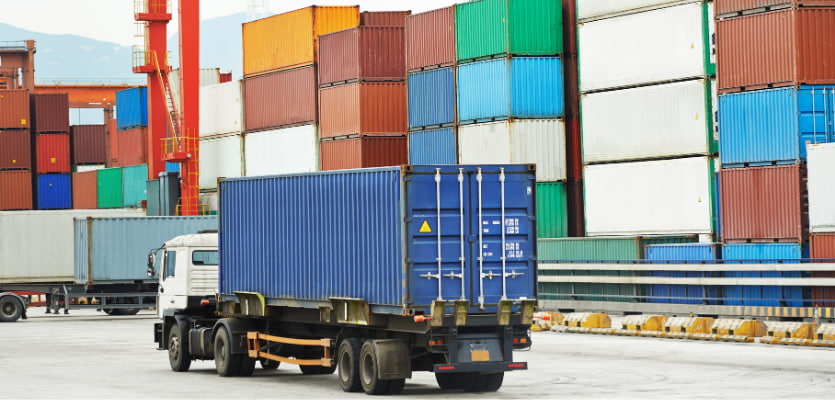
FAQ
What Are The Advantages Of Intermodal Transportation?
Intermodal shipping offers a powerful combination of benefits for businesses. It’s a more affordable option than traditional truckload shipping, while also being environmentally friendly. Intermodal shipping keeps your goods safe with locked boxes and uses trains and trucks in a smart way to cut down on stealing traffic jams, and other shipping problems. Plus, intermodal shipping provides reliable capacity and easy tracking for your peace of mind.
What Are The Means Of Intermodal Transportation?
Intermodal carrier transportation combines different ways to move goods. Methods include trucks, trains, boats, and even giant cargo ships! Companies, called brokers, work together to get your stuff from where it starts all the way to its final destination.
What Is Intermodal Also Known As?
Big metal box! That’s what an intermodal container is. People also call them shipping containers or freight containers. These boxes are specially built so they can travel on different types of transportation, like trains, trucks, and even ships.
How do the advantages of intermodal transportation improve supply chain management?
The advantages of intermodal transportation improve supply chain management by combining the strengths of multiple transport modes – like rail and truck – to lower costs, increase reliability, and reduce transit times, ultimately leading to smoother and more predictable deliveries.
Why are the advantages of intermodal transportation important for Canadian businesses?
For Canadian businesses, the advantages of intermodal transportation are vital because they enable efficient cross-country shipping, reduce greenhouse gas emissions, and provide scalable solutions that support growth and sustainability initiatives.
Can understanding the advantages of intermodal transportation help in reducing shipping risks?
Absolutely! Understanding the advantages of intermodal transportation allows companies to diversify their shipping routes and modes, which minimizes the risk of delays and damages, ensuring safer and more dependable freight movement.
What are the key advantages of intermodal transportation for businesses?
The advantages of intermodal transportation include cost savings, improved reliability, environmental benefits, and reduced cargo handling. It also supports scalability across various industries.
How does intermodal transportation help reduce shipping costs?
One of the primary advantages of intermodal transportation is cost-efficiency. Rail is less expensive than long-haul trucking, and standardized containers help minimize handling costs.
Can intermodal transportation reduce my company’s carbon footprint?
Yes. Among the most compelling advantages of intermodal transportation is its lower environmental impact. Rail emits fewer greenhouse gases compared to trucks, making your logistics more sustainable.
Is intermodal shipping more reliable than road transport?
It can be. One of the lesser-known advantages of intermodal transportation is improved schedule reliability. Trains run on fixed timetables and avoid highway congestion, offering greater consistency.
What industries benefit the most from intermodal transportation?
Retail, manufacturing, agriculture, and consumer goods all benefit from the advantages of intermodal transportation—especially for shipments covering long distances or requiring multi-modal coordination.
Does intermodal shipping work for time-sensitive freight?
Yes, especially when optimized with modern logistics tech. The advantages of intermodal transportation include reduced delays and accurate tracking, making it suitable for many time-sensitive shipments.
Additional Resources
ISO Container Standards – https://www.iso.org/standard/81668.html
Canadian Import Guide – https://www.canada.ca/en/services/business/import.html
Industry Canada – Trade Logistics – https://www.ic.gc.ca/eic/site/086.nsf/eng/home
Trade Commissioner Service – Exporting – https://www.tradecommissioner.gc.ca
U.S. Department of Transportation – Freight and Logistics – https://www.transportation.gov
Global Affairs Canada – Trade and Commerce – https://www.international.gc.ca/trade-commerce/index.aspx?lang=eng
SGS Global Shipping & Logistics Services – https://www.sgs.com/en/services/global-shipping-and-logistics
Export.gov – International Shipping Resources – https://www.export.gov
BDC – Shipping and Logistics Advice – https://www.bdc.ca/en/articles-tools
Statistics Canada – Transportation Data – https://www.statcan.gc.ca
DNV – Container Certification Services – https://www.dnv.com/services/container-certification-154671
National Research Council Canada – Transportation Innovation – https://www.nrc-cnrc.gc.ca/eng/solutions/transportation.html
How We Can Help
For businesses looking to optimize their freight shipping with reliable, efficient, and cost-effective solutions, RailGateway.ca is your trusted partner in intermodal logistics. Whether you’re new to freight trains or want to enhance your existing supply chain, our team of intermodal experts is ready to guide you every step of the way.
Contact RailGateway.ca today for a free quote or to speak directly with one of our experienced intermodal specialists. Let us help you unlock smarter, smoother shipping solutions tailored to your unique needs.
Visit RailGateway.ca or call us to get started on transforming your freight shipping strategy in 2025 and beyond.

